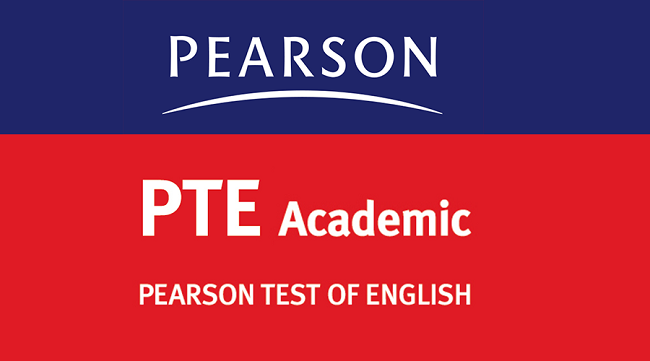Canada remains a top destination for international students seeking quality education and diverse cultural experiences. One of the crucial factors for securing admission to Canadian colleges and universities is meeting the language proficiency requirements. This article covers the PTE (Pearson Test of English) score requirements for various educational levels in Canada and provides insights into the colleges and universities that accept these scores. Below, we have covered the PTE score for Canada.

How Much PTE Score is Required for Canada in 2023
- Diploma: For diploma-level programs in Canada, you typically need a minimum overall PTE score of 45. Additionally, you should achieve a minimum score of 36 in each module, which includes listening, reading, speaking, and writing.
- Undergraduate: If you are applying for an undergraduate degree program in Canada, the minimum overall PTE score required is 50. Similar to diploma programs, you must also attain a minimum score of 45 in each module, demonstrating proficiency in all language skills.
- Post-graduate: For post-graduate or master’s degree programs in Canada, the PTE score requirement is relatively higher. You should aim for a minimum overall score of 65. In each module, you are expected to achieve at least 50, showcasing advanced language proficiency.
List of Universities with Minimum PTE Score for Canada
| Name of University | Minimum PTE score for Canada |
| St. Thomas University | 50 |
| University of Ottawa | 52-55 |
| Brock University | 55 |
| University Canada West | 58 |
| Nipissing University | 58 |
| Western University | 58 |
| University of Calgary | 59 |
| Mcmaster University | 60 |
| York University | 60-65 |
| University of Waterloo | 60-68 |
| McGill University | 65 |
| Dalhousie University | 61-65 |
| Simon Fraser University | 61-65 |
| University of Alberta | 61 – 68 |
| University of British Columbia | 65- 72 |
What To Do If You Didn’t Meet The Ideal PTE Score for Canada
- Retake the PTE Exam: Consider retaking the PTE exam after identifying your weaker areas. Focus on improving your skills in those specific modules to achieve a higher overall score.
- Enroll in Language Courses: Join English language courses or programs designed to enhance your language skills. Many Canadian institutions offer language preparation courses that can help you meet the required score.
- Practice Regularly: Dedicate time to consistent practice. Utilize PTE study materials, online resources, and practice tests to familiarize yourself with the exam format and improve your performance.
- Seek Professional Guidance: Consider hiring a tutor or coach specializing in PTE preparation. They can provide personalized guidance and strategies to help you achieve your target score.
- Take Preparatory Courses: Enroll in PTE preparatory courses offered by language schools or institutions. These courses are specifically designed to prepare you for the PTE exam.
- Apply to Institutions with Lower Requirements: Explore Canadian colleges or universities with slightly lower language proficiency requirements. Some institutions may accept students with scores slightly below the ideal threshold.
- Consider Conditional Admission: Some institutions offer conditional admission, allowing you to begin your academic program while concurrently taking language courses to meet the proficiency requirements.
- Immerse Yourself in English: Surround yourself with the English language as much as possible. Engage in conversations, watch English-language films, read books, and practice writing essays to improve your language skills.
- Stay Informed: Keep yourself updated on changes in language requirements and admission policies for your desired Canadian institution.
- Apply Early: Submit your application early, even if you haven’t met the language requirements. Some institutions may offer provisional acceptance or additional time to fulfill these requirements.
Which is Better for Canada PTE or IELTS
Both PTE (Pearson Test of English) and IELTS (International English Language Testing System) are widely accepted English proficiency exams for Canada. The choice between them depends on various factors, including your personal preferences and the requirements of the Canadian institution or immigration program you’re applying to. Here’s a comparison to help you decide:
PTE (Pearson Test of English)
- Computer-Based: PTE is entirely computer-based, which means all components, including speaking, are recorded digitally. It offers a standardized and unbiased assessment.
- Quick Results: PTE provides faster results, typically within 2-5 days, which can be beneficial if you have tight application deadlines.
- Scoring System: PTE uses a scoring system from 10 to 90, which aligns with the Common European Framework of Reference for Languages (CEFR). Some institutions may have specific score requirements.
- Speaking Section: The speaking section involves speaking into a microphone, and responses are graded by automated scoring algorithms. Some test-takers find this less intimidating than speaking to a human examiner.
- Availability: PTE is available in more locations worldwide, which can be advantageous if you’re not near a major city.
IELTS (International English Language Testing System)
- Paper or Computer: IELTS offers both paper-based and computer-based tests, allowing you to choose the format you’re more comfortable with.
- Global Recognition: IELTS has been widely recognized and accepted by Canadian institutions and immigration programs for a long time.
- Human Scoring: IELTS speaking and writing sections are assessed by human examiners, which some test-takers prefer for more nuanced evaluation.
- Common Scale: IELTS uses a 0-9 band scale, making it easier for institutions to set specific score requirements.
- Test Familiarity: Many test-takers are more familiar with IELTS because it has been in use for a longer period.
Tips on How to Pass Your PTE
1. Familiarize with the Test Format
Before taking the PTE (Pearson Test of English), it’s crucial to familiarize yourself with the test format. The PTE assesses your English language skills through various tasks, including speaking, writing, listening, and reading. Understanding the test structure, question types, and scoring criteria will give you a significant advantage. Take advantage of official PTE study materials and practice tests available online to get a sense of what to expect on test day.
2. Practice Regularly
Practice is key to success in the PTE. Regularly set aside time to practice each section of the test. Focus on areas where you may have weaknesses, but don’t neglect your strengths either. Consistent practice helps you become more comfortable with the test format, improves your speed and accuracy, and boosts your confidence. Consider using PTE preparation books, online courses, or mobile apps that offer practice exercises and simulated tests.
3. Develop Your English
Improving your overall English language proficiency is essential for performing well on the PTE. Engage in activities that expose you to English, such as reading English books, newspapers, or websites, and watching English-language films or TV shows. Expanding your vocabulary and comprehension skills will not only benefit your reading and listening sections but also enhance your speaking and writing abilities.
4. Enhance Your Speaking Skills
The speaking section of the PTE requires you to communicate clearly and fluently. To excel in this section, practice speaking English regularly. Engage in conversations with native speakers if possible, or find language exchange partners. Record your responses to PTE speaking tasks and listen to them critically. Pay attention to pronunciation, intonation, and pacing. Familiarize yourself with common PTE speaking task types, such as the Read Aloud, Describe Image, and Repeat Sentence.
5. Enhance Your Writing Skills
In the writing section of the PTE, you’ll be assessed on your ability to convey ideas effectively and organize your thoughts logically. Strengthen your writing skills by practicing essay writing, summarizing information, and constructing coherent arguments. Review grammar and punctuation rules to ensure your writing is error-free. Take advantage of PTE writing tasks, such as Summarize Written Text and Write Essay, to refine your written communication.
6. Time Management
Effective time management is critical during the PTE. Each section has its own time limit, and you must complete tasks within that time frame. Practice pacing yourself to ensure you don’t run out of time before completing all questions. In the reading and listening sections, it’s vital to read or listen actively while managing your time efficiently. Develop strategies for quickly identifying key information and moving on to the next question. Prioritize tasks based on their point value and difficulty level.
Conclusion
PTE has emerged as a transforming force for those hoping to come to Canada or seek further education in the Great White North in a world where chances are frequently entwined with linguistic skills. PTE is the key that can open these changes, which are offered by Canada’s prestigious universities and immigration programs.
Remember to focus on realizing your dreams as you prepare for your PTE experience rather than merely worrying about your test scores. PTE for Canada is the link that can turn dreams into reality for anyone who has the skills to qualify for permanent residency or who wants to study abroad at a top-tier university.
In conclusion, PTE for Canada is more than just a test of English language ability; it is a sign of hope and a motivator for reaching greater heights.

